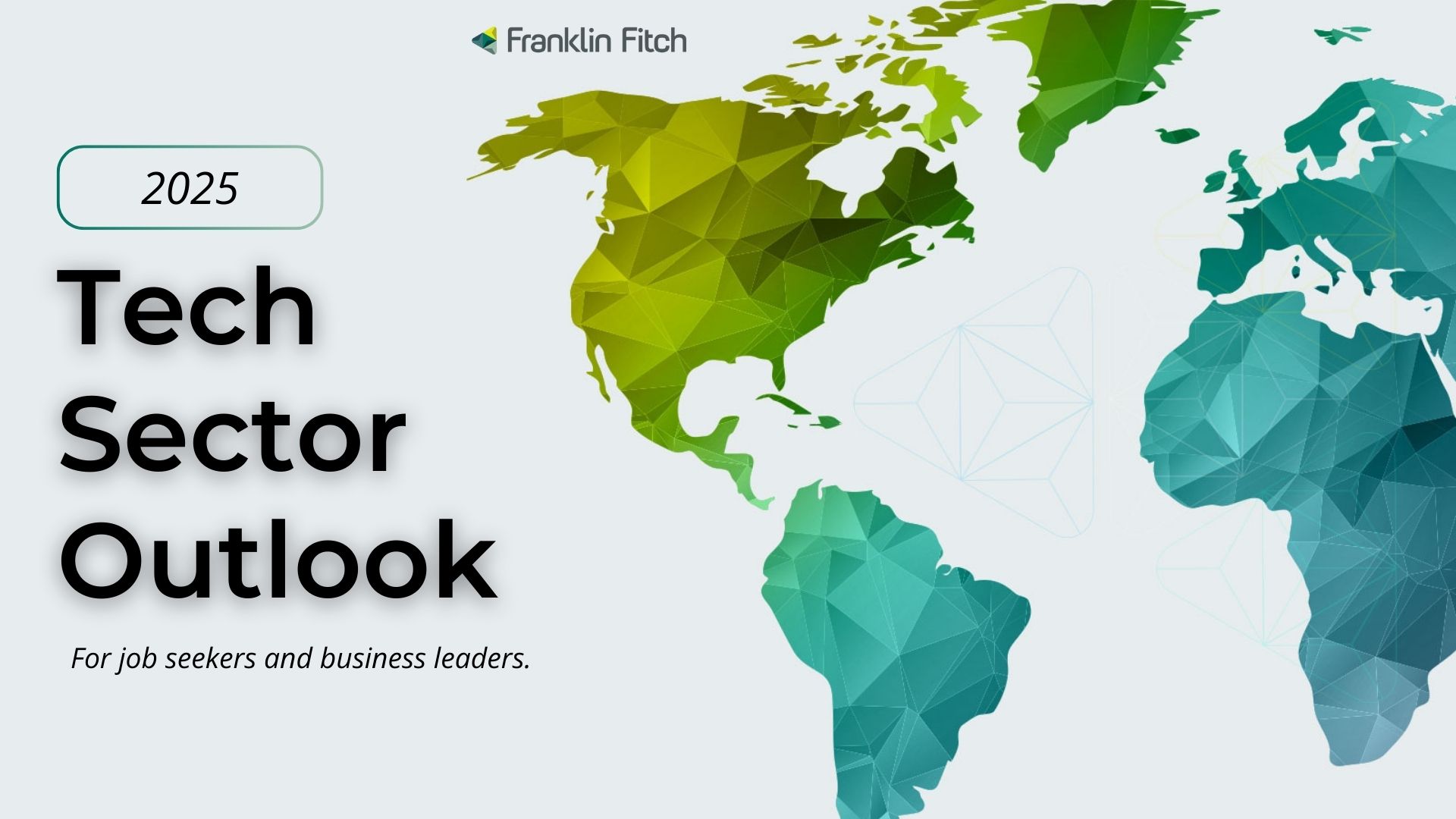
What Should Your Businesses IT Infrastructure Include?
15 Dec, 202313 minutesIT infrastructure solutions are the cornerstone of successful business operations in the eve...
IT infrastructure solutions are the cornerstone of successful business operations in the ever-developing tech landscape. The unseen framework powers the modern enterprise, enabling it to function efficiently, communicate seamlessly, innovate continually, and remain secure in an interconnected digital world.
To navigate this complex space successfully, organizations need to comprehend what comprises IT infrastructure, why it holds paramount importance, and how to make strategic decisions regarding its components and management.
In this guide, we'll dive into the world of IT infrastructure, exploring its fundamental components, various types, and the critical approaches to managing it effectively. By the end of this piece, you'll understand the vital role IT infrastructure plays in driving your business forward and know what to include in your IT infrastructure.
Within this guide on ‘What should your business's IT infrastructure include?’ you will discover the following:
- What is IT infrastructure?
- Why is IT infrastructure important?
- What are the 3 primary components of IT infrastructure?
- Hardware
- Software
- Network
- What are the different types of IT infrastructure?
- Traditional infrastructure
- Cloud infrastructure
- Hyperconverged infrastructure
- IT infrastructure management
- IT operations management
- IT asset management
- IT service management
What is IT infrastructure?
The question of ‘what is IT infrastructure?’ is an important one to know the answer to, and in this section, we’ll do just that. So, what is an IT infrastructure? Well, otherwise known as technology infrastructure, it is the foundation of what keeps a modern business in the tech world operating at optimal levels 24/7, 365.
Ultimately, IT infrastructure is a cumulation of anything an organization uses as part of its IT delivery systems and applications, be it internal resources or outsourced infrastructure supported by a third-party provider. IT infrastructure comprises three key components to support the IT services of a business: hardware, software, and network systems, which we’ll delve into later. It can also be split into three types: traditional, cloud, and hyper-converged; again, we’ll explore more of this in this guide.
Now you know what an IT infrastructure is, you’re probably wondering why it’s important. Scroll to find out more.
Why is IT infrastructure important?
IT infrastructure plays a prominent role in the working world and is widely regarded as the spearhead of business operations. An established and optimized IT infrastructure can bring many benefits to an organization, from boosting productivity levels and enhancing innovation to being a cost-effective solution that keeps you compliant in the online space. Let's explore these key reasons why IT infrastructure is important.
Supports business operations
IT infrastructure is often considered the backbone of modern business operations. It can pioneer the delivery of day-to-day tasks, such as communication, information sharing, and data processing. Without a reliable IT infrastructure, your business could miss out on the opportunity to operate more efficiently.
Boosts productivity levels
A well-thought-out IT infrastructure can streamline your internal workflows and automate repetitive tasks to significantly boost the productivity levels of your IT team. Your employees can quickly utilize your IT infrastructure to access necessary information and applications, allowing them to focus their efforts on higher-value tasks.
Enables innovation
As IT infrastructure can boost the productivity levels of your people, it also frees up their time to focus on innovating and optimizing other aspects of your IT deliverables. Additionally, it allows your IT team to introduce digital transformation into your business with the latest technological advancements, enhancing your products and services to keep you ahead of the competition.
Advances business growth
IT infrastructure is scalable and can grow alongside your organization's requirements and projections. This scalability is vital if you’re experiencing growth or in-demand seasonal fluctuations. It allows for the addition of the latest hardware, software, and network capacity as needed.
Improves communication
Communication is the crux that makes or breaks successful organizations. IT infrastructure can improve communication internally and externally within your business. Whether it's video conferencing, email systems, or other online collaborative tools, IT infrastructure enables seamless communication between your staff, partners, clients, and customers, regardless of where they are in the world.
Enhances customer experience
Your clients and customers are a significantly vital aspect of your business, and retaining them requires the delivery of excellent customer service. Top IT infrastructures can enhance customer interactions by providing responsive online services, websites, and IT support systems, enabling you to exceed customer demands and deliver a seamless user experience.
Keeps you secure
IT security is paramount in today's digital landscape, as breaches can result in legal consequences and financial and reputational damages. The best IT infrastructures include security procedures and tools to protect your assets from cyber threats and data breaches. Additionally, IT infrastructure can keep you secure by adhering to the various compliance regulations relevant to your business and industry.
Disaster recovery and downtime
IT infrastructure can also protect your business with disaster recovery and business continuity, ensuring that your IT systems and data can be restored in the potential event of a cyber attack, hardware failure, or natural disaster. This minimizes downtime, allowing your internal and external users to work in the comfort of knowing they are secure and protected when utilizing various aspects of your IT infrastructure.
Facilitates data management
Data is an immensely valuable asset for organizations, and IT infrastructure can help play a crucial part in processing, storing, and securing your data. A robust IT infrastructure ensures your data is available, protected, and free to be analyzed to influence informed decision-making.
Cost-effective solution
Despite the potential of initial costs being expensive, effectively managed IT infrastructure solutions can help your company reduce operational costs through automation, virtualization, and efficient resource utilization. Cloud computing also offers cost-effective options for infrastructure deployment. We’ll discuss more about the cloud later.
With an understanding of why IT infrastructure is important, let’s move on and explore the different components of IT infrastructure.
What are the 3 primary components of IT infrastructure?
As mentioned, there are three IT infrastructure components: hardware, software, and networking. These primary components work in tandem to make up a well-functioning IT infrastructure. In short, the hardware provides the physical resources, the software is the means to utilize these resources, and networking facilitates the data transfer and communication between devices and internal and external users.
Let's explore these three IT infrastructure components in more detail.
Hardware
Hardware is the first of the three components of IT infrastructure we'll look into. These components are the physical equipment and devices used in a business's IT operations. Hardware components ultimately consist of the physical attributes that host the software used by your employees, clients, and customers.
The physical hardware components of IT infrastructure typically include the following:
- Computers
- Laptops
- Servers
- Data centers
- Storage devices, including hard drives
- Equipment relating to networking, such as routers, switches, and access points
- Printers
- Other physical and tangible devices
Software
Next on the list of the three components of IT infrastructure is software. Software is defined by the various applications and programs that can be accessed on the previously discussed hardware infrastructure. Software IT infrastructure components consist of everything from the operating system that manages hardware resources to productivity software, enabling users to seamlessly interact with the hardware available to them.
The types of software IT infrastructure components include the following:
- Enterprise resource planning (ERP)
- Customer relationship management systems (CRM)
- Content management systems (CMS)
- Applications such as Microsoft Office
- Accounting software
- Web servers
- Operating systems
- Other specialized software used to conduct specific tasks
Network
Network components of IT infrastructure round everything up and are the systems responsible for integrating and enabling communication between various internal and external devices. This communication is done via multiple network protocols such as the Internet, local area networks (LANs), and wide area networks (WANs).
Networking infrastructure includes the following:
- Switches
- Routers
- Firewalls
- Wireless access points
- Cabling
Network components of IT infrastructure ultimately contribute to the configuration that allows data to move securely and efficiently across various networks and between different devices.
What are the different types of IT infrastructure?
Another common question that gets dotted around the tech landscape is, ‘what are the different types of IT infrastructure?’. This question can open up a range of answers as there are several different types of IT infrastructure utilized by businesses worldwide.
In this section, we'll delve into three of the most commonly used types of IT infrastructure: traditional, cloud, and hyper-converged.
Traditional infrastructure
Traditional IT infrastructure, also known as 'onsite' or 'on-premise,' is where the organization owns and manages every aspect of its infrastructure internally without the support of an outsourced third-party provider. Typically used for business-only or private purposes, traditional IT infrastructure consists of hardware, software, and network components mentioned previously in this guide.
Traditional infrastructure requires businesses to have plenty of free space and extensive power to allow the equipment to run efficiently. As a result, this type of infrastructure is more expensive to implement and develop, let alone the people you'll need to put behind the day-to-day IT management of the infrastructure.
However, as everything is kept internal, it gives you the visibility to oversee each aspect of your IT infrastructure solutions and the creative freedom to implement the latest hardware and software into your organization as and when you choose.
Cloud infrastructure
Cloud infrastructure is next on our list of the most common types of IT infrastructure we'll discuss in this section. This infrastructure comprises similar hardware, software, and networks as traditional, but the most significant difference is that all the equipment is stored on the cloud rather than kept in-house.
End users can access the cloud infrastructure over the Internet, allowing your employees to work remotely and share and collaborate on files and data from remote locations. Therefore, it's no surprise that cloud computing infrastructure gained more traction during the pandemic as it allows for hybrid working opportunities.
Cloud IT infrastructure typically involves companies turning to a third-party cloud services provider (CSP) like Google, Microsoft, and Amazon to support their cloud operations. These CSPs typically offer a pay-as-you-go option, providing anything and everything you'd require in your IT infrastructure, from hardware, software, and networking equipment. Ultimately, cloud infrastructure can be a more flexible and cost-effective option while also being able to automate specific repetitive tasks.
Hyper-converged infrastructure
Hyper-converged infrastructure (HCI) is a software-focused alternative that allows businesses to manage all the aspects of a traditional data center, from networking, computing, virtualization, and storage in a single system. This type of IT infrastructure is typically implemented through commercial off-the-shelf servers and is hardware-agnostic.
Additionally, hyper-converged infrastructure is designed with the option for scalability at the forefront and is often considered a cost-effective and simplistic infrastructure to manage that again allows for remote working.
In terms of its simplicity, as everything is managed through one system, hyper-converged infrastructure makes it easy to educate administrators and new users on how to work their way around the system. Essentially, this type of IT infrastructure takes some of the simplicities seen on the cloud to a business's internal operations.
Now you know the three most typical types of IT infrastructure your business can utilize, there are also three common methods for managing them. In the next section of our guide, we'll explore what IT infrastructure management is and the various approaches you can take to manage it.
What is IT infrastructure management?
As discussed, IT infrastructure comprises a broad range of components, from software, hardware, and network, and can be established through various ways, including traditional, cloud, and hyper-converged infrastructure. All these intricacies, from the components, systems, environments, and even people within your IT department, require some form of management. This is where IT infrastructure management comes in.
IT infrastructure management oversees all aspects of an infrastructure, from internal and external resources. There are three common approaches to technology infrastructure management: IT operations management, IT asset management, and IT service management. In this section, we'll explore these three types in more detail.
IT operations management
IT operations management (ITOM) oversees all the technology deliverables and services within an organization, from hardware, software, and networking resources used by a company’s employees, clients, and customers. The ITOM model performs back-end tasks that focus on optimizing the availability, efficiency, and performance of the business's IT infrastructure to allow for seamless operations around the clock.
Teams working within an ITOM structure support a company's applications, services, and infrastructure through three core functions.
Help desk operations
IT operations and support managers play a crucial role in an ITOM team, providing incident response, troubleshooting infrastructure issues, managing data backups, and disaster recovery. This aspect of ITOM ultimately sets out the processes to help internal and external users get the best out of the infrastructure.
Network infrastructure management
ITOM professionals supporting the network infrastructure management aspects of a company's IT operations will implement and monitor the hardware, software, and networks required for internal and external business communications. This infrastructure typically includes the following:
- Switches
- Routers
- Monitoring applications and tools
- VPN administration
- TCP/IP addressing
- Firewalls and network security
- Telephone systems
Server and device management
IT operations professionals also manage various endpoints within an infrastructure, including upgrading, patching, and maintaining services. They also manage the access and storage for devices such as laptops, desktops, mobiles, tablets, and other IoT devices.
ITOM offers companies many benefits, including predicting and identifying issues within an IT infrastructure before they can cause problems for a business and its end users. Additionally, it can automate workflows through AI whilst also delivering DevOps and enhancing data management through a configuration management database.
IT asset management
IT asset management (ITAM) is the process of tracking and managing an organization's IT assets throughout their lifecycle. This includes any physical hardware equipment like computers and servers, software assets like applications licenses, and other IT-related cloud-based resources. ITAM focuses on ensuring IT assets are used effectively and properly disposed of when no longer needed.
The process of ITAM typically works as follows:
Asset inventory
The first step of ITAM involves the process of identifying and tracking all of the organization's IT assets, including the hardware, software, licenses, and other IT-related resources.
Asset lifecycle costs
This step collates data surrounding the financial costs of the inventory based on contractual information relating to each asset's maintenance and disposal costs.
Asset tracking
Next is the step of asset tracking, which involves using an ITAM system or tools to monitor and track various IT assets. This includes the process of tracking the location of IT assets to help organizations ensure their assets are not lost or misplaced.
Asset maintenance
This is the process of keeping IT assets in optimal working condition throughout their lifecycle. Asset maintenance includes tasks such as repairs, upgrades, and disposal.
Asset compliance
Another step in the ITAM process ensures that all the IT assets comply with all applicable regulations. This step involves tasks such as tracking license usage and ensuring that assets are appropriately disposed of.
We’ve also mentioned how the ITAM manages the complete IT asset lifecycle, but what is this? The IT asset lifecycle typically follows these stages:
Planning
- Identify the need for the asset
- Research different options
- Develop a budget
Acquisition and procurement
- Purchase or lease the asset
- Configure the asset for use
Deployment and utilization
- Install the asset within the business’s IT infrastructure
- Use the asset to support the organization's business activities
- Track the asset's usage
- Monitor the asset's performance
Maintenance
- Perform repairs and upgrades as needed
- Keep the asset in good working condition
Disposal/retirement
- Remove the asset from the service
- Properly recycle or dispose of the asset
ITAM is a commonly used IT infrastructure management approach due to its benefits, such as informing business decisions surrounding the justification of IT asset acquisitions and deployments. The tracking ITAM allows is another benefit that ensures a business knows the locations of its assets at all times and that they are operating at optimal levels.
IT service management
IT service management (ITSM) is a more customer-focused approach involving a set of practices that organizations use to manage the delivery of IT services to their clients and customers. ITSM encompasses all aspects of IT service delivery, from the initial planning and design of services to the day-to-day operation and support of those services.
ITSM can be broken down into various frameworks, such as COBIT, MOF, eTOM, TOGAF, and SIAM, to name a few. However, two of the more notable frameworks are the information technology infrastructure library (ITIL) and DevOps.
ITIL
ITIL is the most widely used and popular ITSM framework. It provides a comprehensive set of best practices for IT service management and is divided into five stages:
- Service strategy
- Service design
- Service transition
- Service operation
- Continual service improvement
The ITIL framework is regularly updated to keep up with the ever-evolving tech landscape. ITIL 4 is the latest installment, brought into fruition in 2019, to support digital transformation.
DevOps
DevOps framework in ITSM can improve an organization's IT service delivery by breaking down the development and operations teams and automating the processes involved in developing and deploying IT applications. This framework is commonly associated with site reliability engineering (SRE), which supports the automation of incident response and repetitive operational tasks.
ITSM ultimately aims to ensure that IT services meet the business's and its customers' needs. This means that ITSM must be aligned with the business's strategic objectives and must be able to adapt to changing organizational requirements.
Among other IT infrastructure solutions, ITSM is widely regarded as a cost-effective option for businesses looking to offer a more streamlined and compliant service. It is also known to be a top framework for increasing productivity and scalability.
A broad range of IT infrastructure management solutions can ultimately enhance your business operations. With this also comes various IT management software that can support your IT deliverables and operations. Discover more about this by reading our guide on 5 of the best IT management software your business needs to know.
The Final Word
Your business's IT infrastructure is the backbone of modern operations in the digital age. It encompasses hardware, software, and network components that support and drive your organization's various IT-related aspects. Understanding the importance of IT infrastructure is crucial, as it directly impacts your business's productivity, innovation, growth, communication, customer experience, security, disaster recovery, data management, and cost-effectiveness.
The three primary components of IT infrastructure – hardware, software, and network – are essential building blocks that enable the efficient functioning of your IT systems. Hardware provides the physical resources, software facilitates the utilization of these resources, and networking ensures seamless data transfer and communication.
Furthermore, your company can choose from various types of IT infrastructure, including traditional, cloud, and hyper-converged solutions, each with advantages and considerations. These choices can significantly influence your IT environment's scalability, flexibility, and cost-effectiveness.
We’ve also highlighted how IT infrastructure management is critical for overseeing and optimizing your IT assets, and it comes in three common approaches: ITOM, IT ITAM, and ITSM. Each approach addresses different aspects of IT infrastructure, from optimizing operations to managing assets and delivering services to customers.
In today's digital world, investing in well-designed and managed IT infrastructure solutions is not just an option; it's a necessity to stay competitive, efficient, and secure. By understanding the components, types, and management approaches, you can make informed and critical decisions to create an IT infrastructure that supports your business's growth and success.
Further, regarding this topic, people often ask the question of who should support or maintain the IT infrastructure. Find out more about the types of roles that can bulk out your IT team and help support the growth of your IT infrastructure management by reading our guide on how to build a successful IT department structure.
Specialists in IT infrastructure recruitment
At Franklin Fitch, we know how top IT infrastructure solutions are the difference-makers between your business’s success and falling behind the competition. Our IT infrastructure consulting specialists offer a range of client services and can help match you to the talent you require to optimize your internal tech operations.
Contact us today to discover more about our IT infrastructure recruitment solutions and discuss your specific needs.






